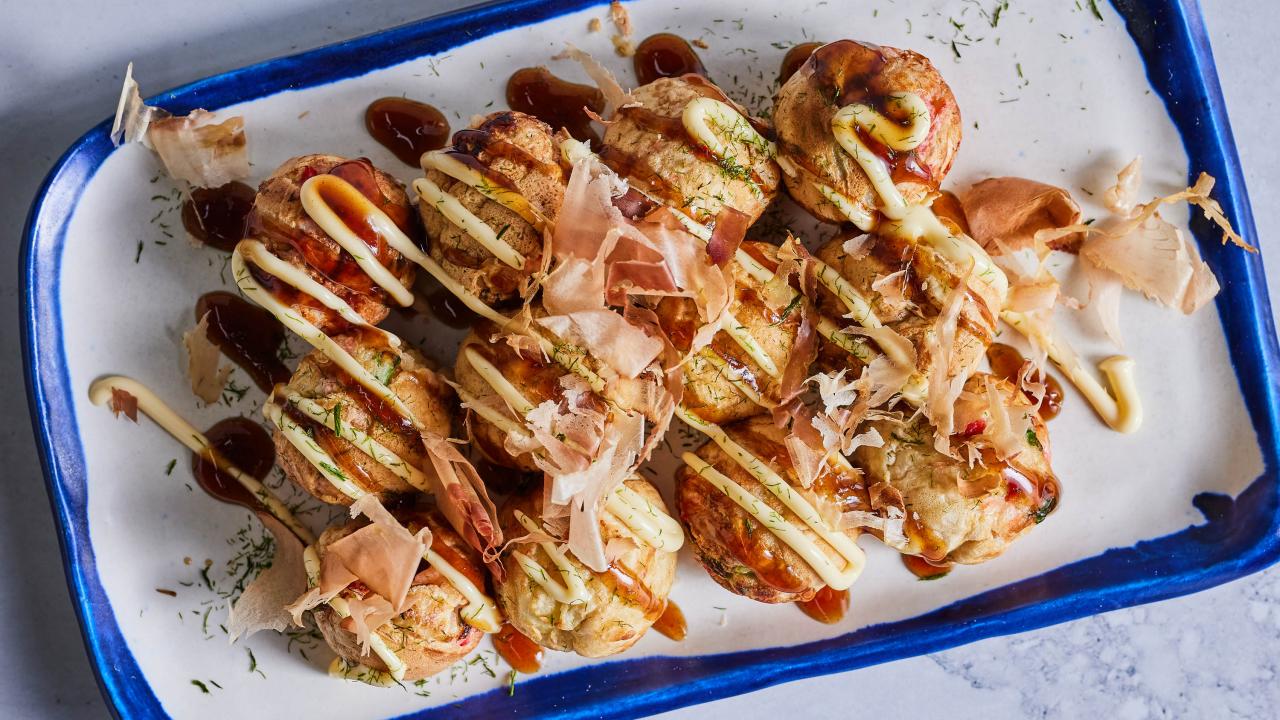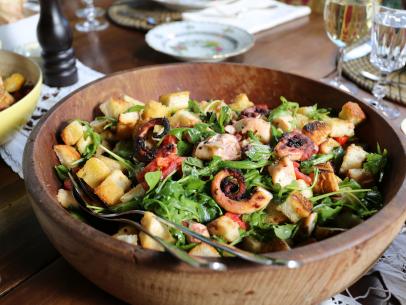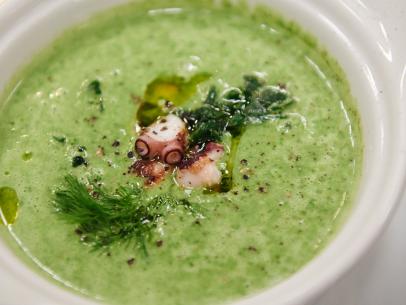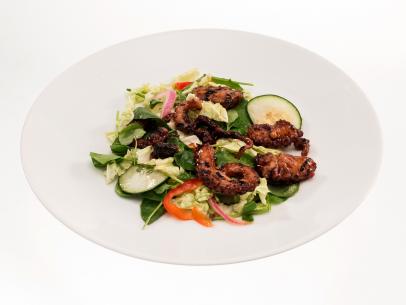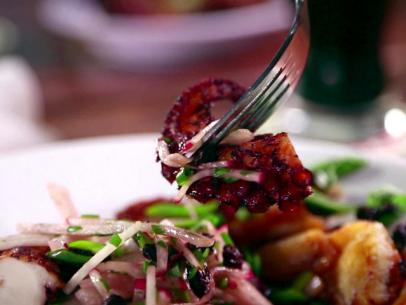Takoyaki
- Level: Intermediate
- Total: 1 hr 20 min (includes Dashi steeping time)
- Active: 30 min
- Yield: 24 to 40 takoyaki (depending on your pan)
- Level: Intermediate
- Total: 1 hr 20 min (includes Dashi steeping time)
- Active: 30 min
- Yield: 24 to 40 takoyaki (depending on your pan)
Ingredients
For serving:
Dashi:
Directions
Special equipment:
a takoyaki pan (see Cook's Note), 1 or 2 skewers or chopsticks and a pastry brush- Whisk together the Dashi and eggs in a large bowl. Add the flour, baking powder and salt and whisk just until smooth. Transfer the batter to a 1-quart measuring cup or bowl with a spout for easy pouring.
- Heat a takoyaki pan over medium heat (see Cook's Note). Generously grease the “holes” and the entire surface using a pastry brush. Fill each hole about three-fourths of the way with batter (see Cook’s Note). Working quickly, place the following in each hole: 2 to 3 pieces of octopus, a pinch of scallions, a pinch of tenkasu and a pinch of beni shoga. (If you find that the batter is cooking too quickly, reduce the heat a bit. It may take a few tries to get the timing down.)
- Top off each hole with a little more batter — it’s fine if it overflows a bit. Let cook until the bottom of each takoyaki is set but the inside is still wet, about 3 minutes. Working quickly, use 1or 2 skewers or chopsticks (I find it easier with 2) to turn each takoyaki about 90 degrees, cutting through any batter on the surface between the holes and “scraping” it into each hole as you go, forming a rough ball shape. Let any batter run out of the balls and when it starts to set, turn the balls completely over and cook, regularly rotating them until they are evenly golden brown all over and just cooked through, 3 to 4 minutes more (cooking time will depend on the size of the takayoki).
- Remove the balls to a platter, drizzle with takoyaki sauce and mayonnaise and then sprinkle with aonori and katsuobushi. Serve immediately and repeat with the remaining ingredients as needed.
Dashi:
- Combine the kombu and 3 cups cold water in a medium saucepan and let sit for about 30 minutes. (You can skip this step if you’re short on time but it does lend a little extra flavor.) Heat over medium heat until the water comes to a near boil, but doesn’t actually boil, about 5 minutes. Discard the kombu.
- Add the katsuobushi evenly over the water, bring to a boil over high heat and then immediately remove from the heat. Let steep for about 10 minutes without stirring.
- Pour the dashi through a fine-mesh strainer into a bowl or quart-size measuring cup. Do not press down on the katsuobushi, which can make the dashi cloudy and/or bitter.
- Dashi is best used the day it is made but can be cooled and refrigerated in an airtight container for up to 3 days. Makes about 2 1/2 cups
Cook’s Note
To make takoyaki, you’ll need a special takoyaki pan. There are a variety to choose from online and the reviews can vary. I had success with a round cast-iron 15-hole models on a gas stove as well as a self-contained device that combines a 20-hole molded pan and the heat source in the form of a cassette burner. (The yield and cook times are based off the latter model and will vary depending on the pan you use.) Experienced takoyaki makers typically cover the entire pan with batter, then cut through and scrape the batter on the surface into the holes. I find it easier to only fill the holes but feel free to experiment.
























